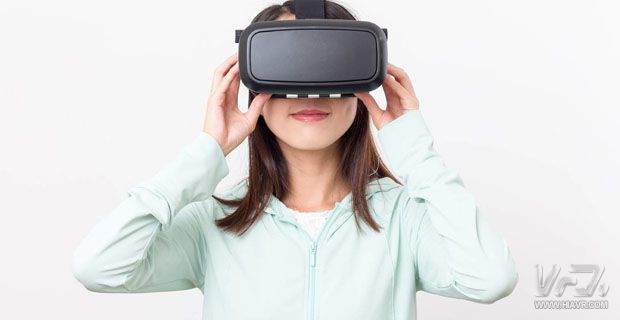On January 02, 2018, there was a huge obstacle to the transition to head-mounted mobile computing. Unlike smart phones, this requires a dramatic change in consumer behavior. The head is a new concept. If people are to accept this new thing, the industry needs to first explain to them what this is. Therefore, the head may appear more like a personal computer (it took 15 years) than the smartphone (2 years).

In the new era of the Internet explosion in the early 1990s, we often draw on a chart of consumer technology adoption rates. The data shows that the speed of adoption will continue to accelerate, and smartphones and tablets have already proved this, but the popularity of such devices is built on a certain basis.
In the United States, for example, it took 50 years for the country to achieve electricity throughout the country; fixed telephones took 30 years; radios took 20 years; televisions took 10 years; and the Internet took less than 5 years. We cannot include AR and VR. In contrast, AR and VR are more like a personal computer that took 15 years to reach a turning point. Obviously, personal computers have spent a long time in integrating into our lives.
Throughout the 1980s, it was widely believed that novelties such as personal computers were among the first adopters of technology enthusiasts and rich people. It took a long time for the personal computer to gain popularity in the office. Personal computers are expensive, whether for entertainment or educational purposes, and they run expensive discs. If the computer has a modem (people think this is a peripheral, like a speaker), you have to use a separate program to open it. I remember that in 1993, I needed to open several programs to get online. One for TCP/IP; one for modems; one for Netscape Navigator web browsers; and one for IRC (a type of web chat protocol).
However, when PCs encountered online services, their development immediately turned into a turning point. The emergence of online services such as AOL and Prodigy, as well as the integration of all of the different Internet software into a single plug-and-play program, has brought the PC to a turning point. By 1996, everyone needed to buy a personal computer, because at that time, the value proposition of the personal computer was already very clear and practical.
At the beginning of the 21st century, most people ushered in the first smart phone: the BlackBerry, which allows users to send and receive mail anytime, anywhere. Soon, consumer phones have such capabilities, and people get free upgrades during normal cell phone replacement cycles. All this is based on the original foundation, and wireless providers and handset manufacturers are constantly working to optimize.
Mobile AR is able to turn the camera into a window in which we perceive the world in a new way, which has been on Android phones since 2015. The iPhone is in the fall of 2017. Because of the size of the Apple device, thousands of users have acquired an AR-compliant smartphone in a matter of days. There are two current problems: First, there is a lack of applications, and most applications currently lack substantive applications or just game optimization; then, reaching out and holding mobile phones to perceive the world may be the worst form of human accidental inventions.
Current augmented reality is particularly effective for businesses (such as computers in the 1980s), but they are largely unsuitable for consumers. For consumers, AR is not yet mature. The device has fundamental problems in optics and in the field of view. In addition, costs are rising, not decreasing. The interface solution is also not obvious. At present, the headlights of AR headlights are mainly concentrated in large companies and some mysterious startups. The most striking is Magic Leap, which officially released the first device in December last year: Magic Leap One and plans to provide products to developers in 2018.
Ironically, the real practical problem is not the device itself. The problem lies in the cloud, involving bandwidth, compression, artificial intelligence and other unresolved issues, and the lack of a geospatial social "AR cloud" that allows glasses to be context aware. For VR, the problem is simpler but more difficult. Navigation through hand controls is not natural, and motion sickness still plagues users. The optics are terrible. At the current resolution, the pixels are still visible, creating a screen effect. In addition, even if it is the current high-end head display, its field of view is only only 110 degrees.
The rapid progress of smart phones has “spoiled†us. We have lost patience with the development of technology. We only hope that the future will come soon. However, VR and AR take time, and we need to be patient.
UCOAX Custom Made USB 3.1 Type C SuperSpeed Cables combine style, quality, performance and value to give a great deal on a great USB cable.
SuperSpeed USB 3.1 Type C is 3rd revision of the ubiquitous USB (Universal Serial Bus) Standard. Clocking in at speeds up to 10Gbit/s, USB 3.1 Type C is a vast improvement over the USB 2.0 speed of 480 Mbit/s while being completely backwards compatible with USB 2.0.
UCOAX USB 3.1 C Male to C Male Cable
Up to 10Gbit/sec
PC and Mac Compatible
Ultra-flexible jacket; Molded strain relief
Foil and braid shield to guarantee an interference free connection
EMI/RFI interference: Metal connector shield to meet FCC requirements
RoHS Compliant
Usb 3.1 Cable,Type C Superspeed Cable,Usb Micro B Superspeed To Usb C,Super Speed Usb C Cable,Fast Charging USB Cable
UCOAX , https://www.jsucoax.com